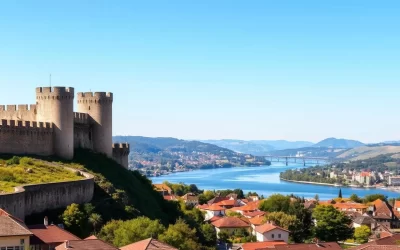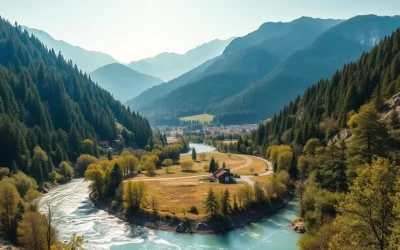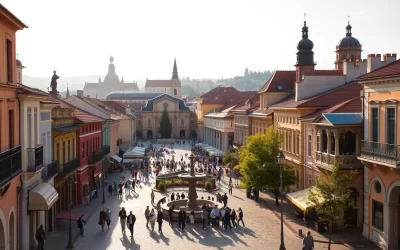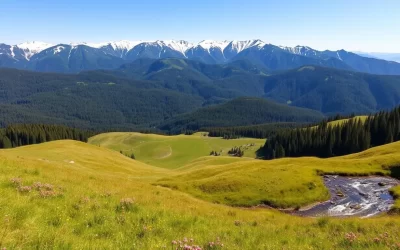✓ Accommodations✓ Flights✓ Rental Cars✓ Tours & Activities
Did you know that Serbia is home to one of the world’s largest Orthodox churches? The Temple of Saint Sava in Belgrade can accommodate 10,000 people and took nearly 100 years to complete. This architectural marvel is just one of many treasures waiting to be discovered in this captivating Balkan nation. From ancient fortresses and monasteries to stunning national parks and vibrant cities, Serbia offers a diverse range of experiences for every type of traveler.
Planning Your Trip to Serbia
Serbia sits at the crossroads of Central and Southeast Europe, making it accessible from many European destinations. Whether you’re drawn to the vibrant streets of Belgrade, the peaceful monasteries of Fruška Gora, or the natural beauty of Tara National Park, planning your Serbian adventure is the first exciting step of your journey.
Ready to Explore Serbia?
Start planning your Serbian adventure with these essential travel services:
Rent a Car
Discover Activities
Getting to Serbia
Most international travelers arrive through Belgrade Nikola Tesla Airport (BEG), which offers connections to major European cities and beyond. Alternative entry points include Niš Constantine the Great Airport for those exploring southern Serbia. If you’re already in Europe, train and bus connections from neighboring countries provide scenic and affordable options.
For the best flight deals to Serbia, consider booking 2-3 months in advance, especially if you’re traveling during the summer peak season or around major festivals like EXIT in Novi Sad.
Find Your Flight to Serbia
Compare prices and book your flights to Belgrade or Niš:
When to Visit Serbia
Serbia experiences four distinct seasons, each offering unique experiences for travelers. The best time to visit depends on your interests and the activities you plan to enjoy.

| Season | Months | Temperature | Best For |
| Spring | April – June | 15-25°C (59-77°F) | City exploration, hiking, fewer crowds |
| Summer | July – August | 25-35°C (77-95°F) | Festivals, river activities, swimming |
| Autumn | September – October | 15-25°C (59-77°F) | Wine tours, national parks, photography |
| Winter | November – March | 0-10°C (32-50°F) | Skiing, Christmas markets, spa retreats |
Spring (April-June) and autumn (September-October) are generally considered the best times to visit Serbia. During these seasons, you’ll enjoy pleasant temperatures, fewer tourists, and either blooming landscapes or beautiful fall colors. Summer brings vibrant festivals like EXIT in Novi Sad (July) but also higher temperatures and more crowds. Winter offers excellent skiing opportunities in resorts like Kopaonik and festive Christmas markets in Belgrade and Novi Sad.
Getting Around Serbia
Serbia’s relatively compact size makes it easy to explore multiple destinations during your visit. The country offers various transportation options to suit different travel styles and budgets.

By Car
Renting a car gives you the freedom to explore Serbia at your own pace, especially when visiting rural areas and national parks. The country has a well-maintained highway system connecting major cities, while scenic country roads lead to charming villages and hidden gems. International driving licenses are recognized, and traffic drives on the right side of the road.
Explore Serbia at Your Own Pace
Rent a car and discover hidden gems throughout Serbia:
By Public Transportation
Serbia has an extensive network of buses connecting cities and towns across the country. Buses are frequent, affordable, and generally comfortable for shorter journeys. The train network is less comprehensive but offers scenic routes, particularly the Belgrade-Bar railway through spectacular mountain landscapes.
By Taxi and Ride-Sharing
Taxis are readily available in cities and are relatively inexpensive compared to Western Europe. Apps like CarGo (Serbia’s equivalent to Uber) operate in Belgrade and other major cities, offering convenient and reliable transportation options.
Travel Tip: When taking taxis in Serbia, always ensure the driver uses the meter or agree on a price before starting your journey. In Belgrade, pink taxis are generally considered the most reliable.
Where to Stay in Serbia
Serbia offers accommodations for every budget and preference, from luxury hotels in city centers to charming guesthouses in rural areas. Here’s a guide to help you find the perfect place to stay during your Serbian adventure.

Major Cities
Belgrade, Novi Sad, and Niš offer the widest range of accommodation options. In Belgrade, the neighborhoods of Stari Grad (Old Town) and Dorćol place you within walking distance of major attractions. Novi Sad’s city center provides easy access to the charming pedestrian zones and Petrovaradin Fortress.
Rural Retreats
For an authentic experience, consider staying in a “seosko domaćinstvo” (rural household) in regions like Zlatibor or Fruška Gora. These family-run accommodations often include homemade meals featuring local specialties and provide insight into traditional Serbian life.
Spa Towns
Serbia has a long tradition of spa tourism. Towns like Vrnjačka Banja and Sokobanja offer wellness-focused accommodations ranging from modern spa hotels to historic sanatoriums, all centered around natural thermal springs.
Find Your Perfect Stay in Serbia
Browse accommodations across Serbia to suit every budget and preference:
Top Things to Do in Serbia
From historic fortresses and monasteries to stunning natural landscapes and vibrant city experiences, Serbia offers a diverse range of attractions for every type of traveler. Here are the must-see destinations and experiences to include in your Serbian itinerary.
1. Explore Belgrade Fortress (Kalemegdan)

Perched at the confluence of the Sava and Danube rivers, Belgrade Fortress is the historic heart of Serbia’s capital. This impressive complex has witnessed over 2,000 years of history, from Celtic settlements to Roman forts and Ottoman conquests. Today, it houses museums, restaurants, and the beautiful Kalemegdan Park. Don’t miss the iconic Victor Monument and the stunning panoramic views of the rivers and city.
Discover Belgrade’s Historic Heart
Book a guided tour to fully appreciate the rich history of Belgrade Fortress:
Find Belgrade Tours
2. Visit Novi Sad and Petrovaradin Fortress
Serbia’s second-largest city, Novi Sad, offers a charming blend of Austro-Hungarian architecture, cafe culture, and artistic spirit. Cross the Danube to explore the magnificent Petrovaradin Fortress, known as the “Gibraltar of the Danube.” The fortress is famous for its underground tunnels, quirky clock tower with reversed hands, and hosting the internationally renowned EXIT music festival each July. Stroll through Novi Sad’s pedestrian zones, Zmaj Jovina and Dunavska streets, to experience the city’s relaxed atmosphere.
3. Discover Tara National Park
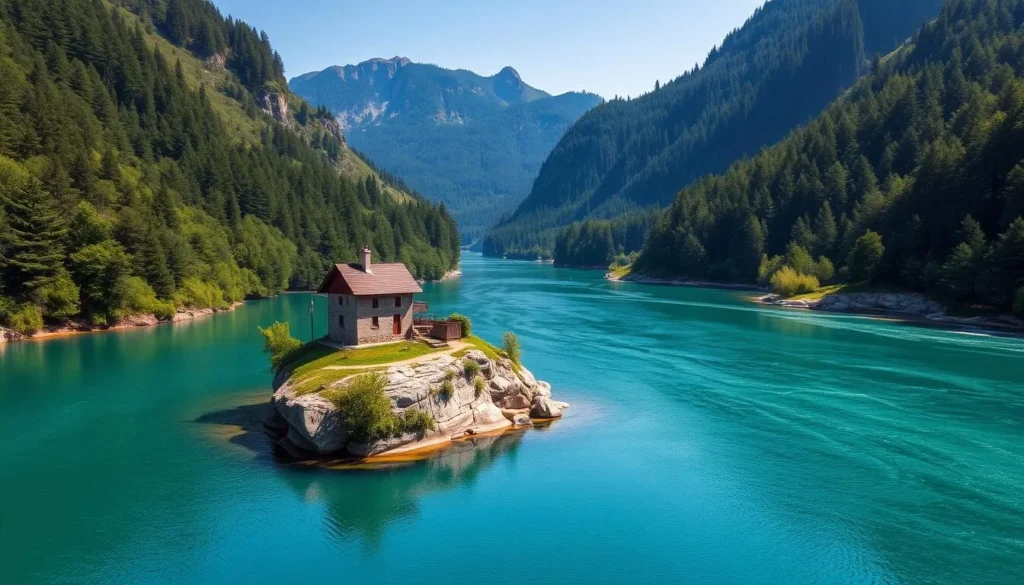
Nature lovers shouldn’t miss Tara National Park in western Serbia. This pristine wilderness is home to dense forests, crystal-clear rivers, and dramatic gorges. Hike to the Banjska Stena viewpoint for breathtaking views of the Drina River Canyon, or photograph the famous house on a rock in the middle of the Drina River. The park offers numerous outdoor activities including hiking, mountain biking, kayaking, and wildlife watching. Look for the rare Pancic’s spruce, a living fossil that can only be found in this region.
4. Marvel at Studenica Monastery
Founded in the 12th century, Studenica Monastery is Serbia’s largest and richest Orthodox monastery and a UNESCO World Heritage site. The monastery’s white marble Church of the Virgin Mary contains some of the finest examples of Byzantine-style frescoes in the world. The peaceful setting in a valley surrounded by mountains adds to the spiritual atmosphere of this important cultural landmark.
5. Explore the Mysterious Đavolja Varoš (Devil’s Town)
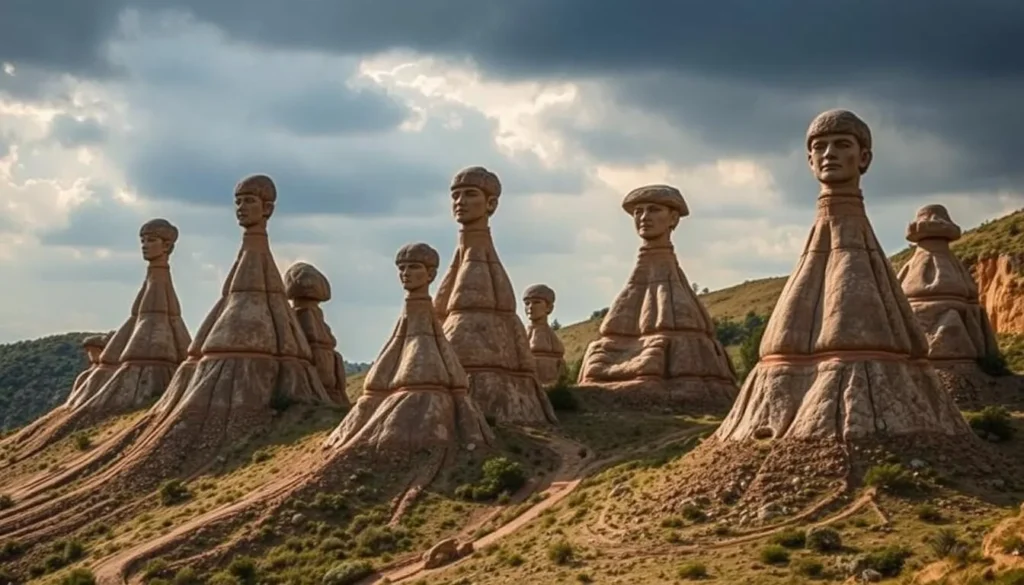
In southern Serbia, you’ll find one of the country’s most unusual natural phenomena. Đavolja Varoš (Devil’s Town) features over 200 strange stone formations created by erosion, standing up to 15 meters tall and topped with stone caps. Local legends claim these eerie towers are actually petrified wedding guests. The site also features two highly acidic springs with unusual mineral properties. The otherworldly landscape makes for fantastic photography, especially at sunset.
6. Ride the Šargan Eight Railway
Experience a journey through time on the historic Šargan Eight narrow-gauge railway near Mokra Gora. This engineering marvel, built in the early 20th century, gets its name from its figure-eight route that climbs the mountain. The vintage train takes you through 22 tunnels and over 10 bridges, offering spectacular views of the surrounding mountains and valleys. Combine your train ride with a visit to the nearby Drvengrad (Wooden Town), a traditional village created by filmmaker Emir Kusturica.
Experience Serbia’s Natural Wonders
Book guided tours to Serbia’s most spectacular natural attractions:
Browse Activities & Tours
7. Tour the Monasteries of Fruška Gora
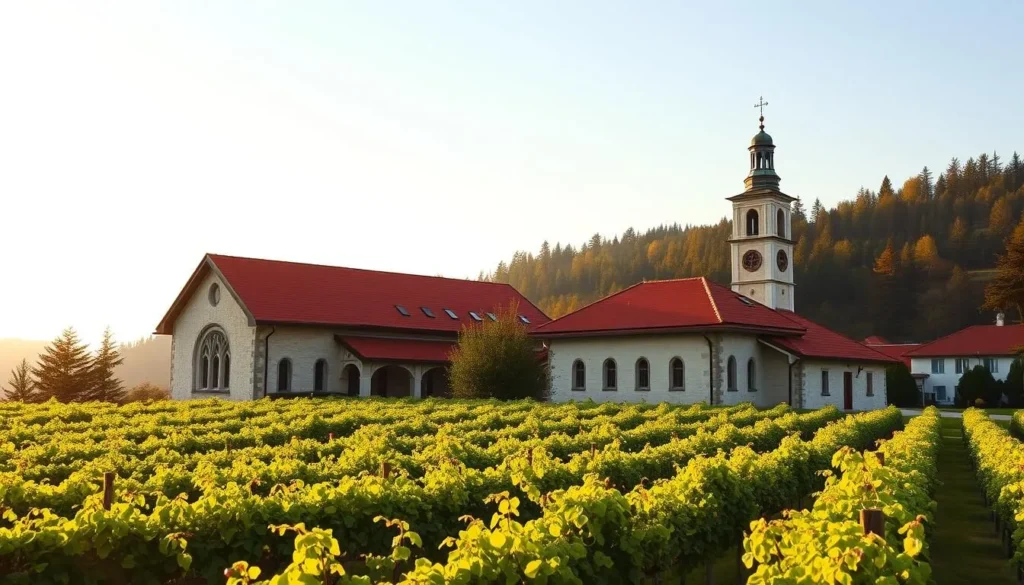
Often called the “Holy Mountain,” Fruška Gora National Park is home to 16 Orthodox monasteries dating from the 15th to 18th centuries. Each monastery has its own unique architecture and artistic treasures, with Krušedol and Novo Hopovo being among the most impressive. The monasteries are nestled among rolling hills covered with vineyards and forests, making for a spiritually and visually rewarding day trip from Novi Sad.
8. Explore the Uvac Special Nature Reserve
The Uvac River’s dramatic meanders have created one of Serbia’s most photogenic landscapes. Take a boat tour through the winding canyon to spot griffon vultures soaring overhead and explore the river’s limestone caves. The viewpoint above the meanders offers the classic postcard shot that has made this area famous on social media. The pristine turquoise water and untouched nature make this a paradise for nature photographers and outdoor enthusiasts.
9. Experience Belgrade’s Vibrant Nightlife
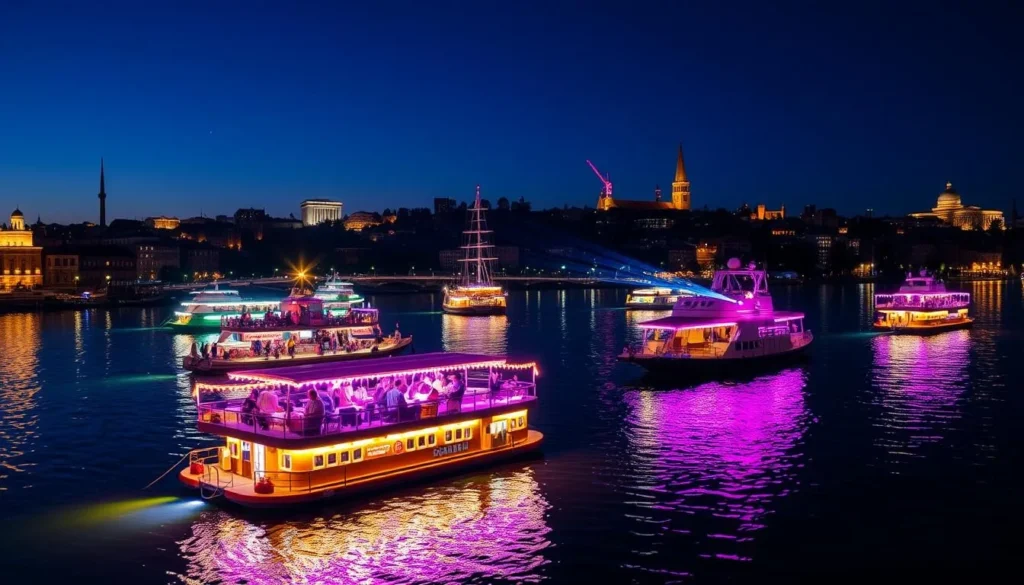
Belgrade has earned its reputation as one of Europe’s top nightlife destinations. The city’s signature feature is its “splavovi” (floating clubs) anchored along the Sava and Danube rivers. These unique venues offer everything from traditional Serbian folk music to international DJs. For a more relaxed evening, explore the bohemian quarter of Skadarlija with its traditional restaurants and live music, or enjoy craft beer at one of the many brewpubs in the trendy Dorćol district.
Serbian Cuisine: What to Eat and Drink
Serbian cuisine reflects the country’s position at the crossroads of different culinary traditions, with influences from Turkish, Hungarian, and Mediterranean cooking. Hearty, flavorful, and generous in portion size, Serbian food is an essential part of the cultural experience.

Must-Try Serbian Dishes
Ćevapi
Small grilled minced meat sausages, typically served with flatbread, chopped onions, and kajmak (a dairy spread).
Pljeskavica
A large grilled meat patty often described as the Serbian hamburger, served with various toppings.
Sarma
Cabbage leaves stuffed with minced meat and rice, slowly cooked in a savory broth.
Ajvar
A roasted red pepper and eggplant spread that’s a staple condiment in Serbian homes.
Burek
Flaky pastry filled with meat, cheese, or spinach, perfect for breakfast or a quick snack.
Gibanica
A cheese pie made with layers of filo dough and a mixture of eggs and cheese.
Serbian Drinks
Serbia has a strong drinking culture centered around rakija (fruit brandy), which comes in various flavors including plum (šljivovica), apricot, quince, and grape. Serbian wines, particularly from the Fruška Gora and Župa regions, are gaining international recognition. Don’t miss trying Bermet, a dessert wine from Sremski Karlovci with a secret recipe dating back centuries.
Dining Tip: In Serbia, it’s customary to take your time over meals. Dinners can last for hours, with multiple courses and plenty of conversation. Embrace this relaxed pace and enjoy the social aspect of dining.
Practical Tips for Visiting Serbia
Make the most of your Serbian adventure with these essential tips covering everything from currency and language to etiquette and safety.
Currency and Money
The Serbian currency is the dinar (RSD). While credit cards are widely accepted in cities and larger towns, it’s advisable to carry cash for rural areas, small shops, and markets. ATMs are readily available in urban areas. For the best exchange rates, avoid airport exchange offices and opt for those in city centers.
Language
Serbian is the official language, written in both Cyrillic and Latin alphabets. In tourist areas and among younger Serbians, English is widely spoken. Learning a few basic Serbian phrases like “Hvala” (thank you) and “Dobar dan” (good day) is appreciated by locals.
Internet and Connectivity
Serbia has good internet coverage, with free Wi-Fi available in most cafes, restaurants, and hotels. For mobile connectivity, consider purchasing a local SIM card, which offers affordable data packages for travelers.
Safety
Serbia is generally a safe country for tourists with low rates of violent crime. Take standard precautions against pickpocketing in crowded tourist areas and public transportation. If you’re hiking in remote areas, particularly near the Kosovo border, stay on marked trails due to potential unexploded ordnance from past conflicts.
Local Etiquette

Serbians are known for their hospitality and friendliness toward visitors. When invited to a Serbian home, it’s customary to bring a small gift like chocolates or wine. Remove your shoes when entering someone’s home unless told otherwise. Avoid discussing sensitive political topics, particularly regarding Kosovo or the Yugoslav wars, unless initiated by your Serbian hosts.
Cultural Tip: If you’re offered rakija (fruit brandy) by a Serbian host, it’s considered polite to accept at least a small amount, even if you don’t finish it. Declining outright might be seen as refusing hospitality.
Ready to Experience Serbia?
From the vibrant streets of Belgrade to the serene monasteries of Fruška Gora, from the dramatic canyons of Uvac to the mysterious rock formations of Devil’s Town, Serbia offers an authentic and diverse travel experience that remains refreshingly off the beaten path. With its rich history, stunning landscapes, hearty cuisine, and warm hospitality, Serbia rewards curious travelers with unforgettable experiences and stories to share.
Whether you’re drawn to cultural exploration, outdoor adventures, culinary discoveries, or simply connecting with the friendly locals, Serbia has something special waiting for you. Start planning your Serbian journey today and prepare to be surprised by this Balkan gem.
Begin Your Serbian Adventure
Take the first step toward exploring the wonders of Serbia:
Rent a Car
Discover Activities
The above is subject to change.
Check back often to TRAVEL.COM for the latest travel tips and deals.

